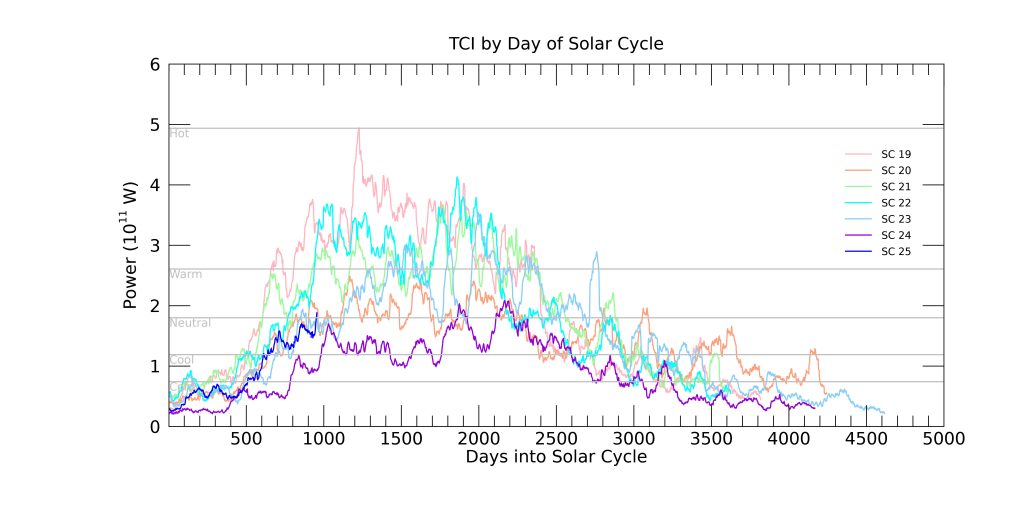It was 2019 and solar cycle number 24 was coming to an end (the numbering started in 1750, from when reliable observations began). It was the least active cycle in over a century.
“Research now underway may have found a reliable new method to predict this solar activity. The Sun’s activity rises and falls in an 11-year cycle. The forecast for the next solar cycle says it will be the weakest of the last 200 years. The maximum of this next cycle – measured in terms of sunspot number, a standard measure of solar activity level – could be 30 to 50% lower than the most recent one. The results show that the next cycle will start in 2020 and reach its maximum in 2025.”
This was according to NASA (https://www.nasa.gov/feature/ames/solar-activity-forecast-for-next-decade-favorable-for-exploration).
NASA was concerned about the prospects for space exploration – when the Sun is very active it is much more hazardous for astronauts because the stronger radiation from the Sun affects people in space, but not on Earth because the Earth has a protective magnetic field.
“The new research was led by Irina Kitiashvili, a researcher with the Bay Area Environmental Research Institute at NASA’s Ames Research Center, in California’s Silicon Valley. It combined observations from two NASA space missions – the Solar and Heliospheric Observatory and the Solar Dynamics Observatory – with data collected since 1976 from the ground-based National Solar Observatory.
One challenge for researchers working to predict the Sun’s activities is that scientists don’t yet completely understand the inner workings of our star. Plus, some factors that play out deep inside the Sun cannot be measured directly. They have to be estimated from measurements of related phenomena on the solar surface, like sunspots.
Kitiashvili’s method differs from other prediction tools in terms of the raw material for its forecast. Previously, researchers used the number of sunspots to represent indirectly the activity of the solar magnetic field. The new approach takes advantage of direct observations of magnetic fields emerging on the surface of the Sun – data which has only existed for the last four solar cycles”.
“The forecast for the next solar cycle says it will be the weakest of the last 200 years. The maximum of this next cycle – measured in terms of sunspot number, a standard measure of solar activity level – could be 30 to 50% lower than the most recent one. The results show that the next cycle will start in 2020 and reach its maximum in 2025”.
(Emphasis added)
“NASA is charged to get American astronauts to the Moon in the next five years with a landing on the lunar South Pole. With a calm and quiet space weather forecast for the coming decade, it is a great time to explore!”
There is only one thing wrong with this forecast. It has turned out to be totally wrong!
This chart shows the development of solar cycle 25 in comparison with the previous six. Cycle 25 is already stronger than cycle 24, not weaker (it was sourced from spaceweather.com on 26 January 2023).

TCI stands for thermosphere climate index. Cycle 25 is also stronger than cycle 24 on the basis of sunspot counts.
Sunspot cycles affect not only radiation experienced by astronauts. They affect weather cycles on Earth. Being able to forecast their strength would be very valuable, but so far this does not seem possible.
Long periods of low solar activity can lead to very cold weather, as was the case with the Maunder Minimum from 1645 to 1715. Europe was exceptionally cold over this period.
Forecasts are often wrong, whether they concern space weather, weather on earth, climate, the economy, political events, or sales. We need to have a plan ready to implement if forecasts are in error.
NASA needs to keep working on better protective equipment for astronauts.
We also need to learn from forecasting errors, something which too rarely happens. Hopefully NASA will learn and gradually improve their forecasting accuracy.